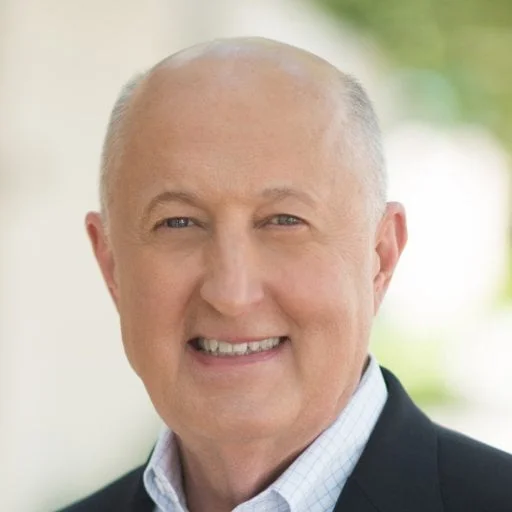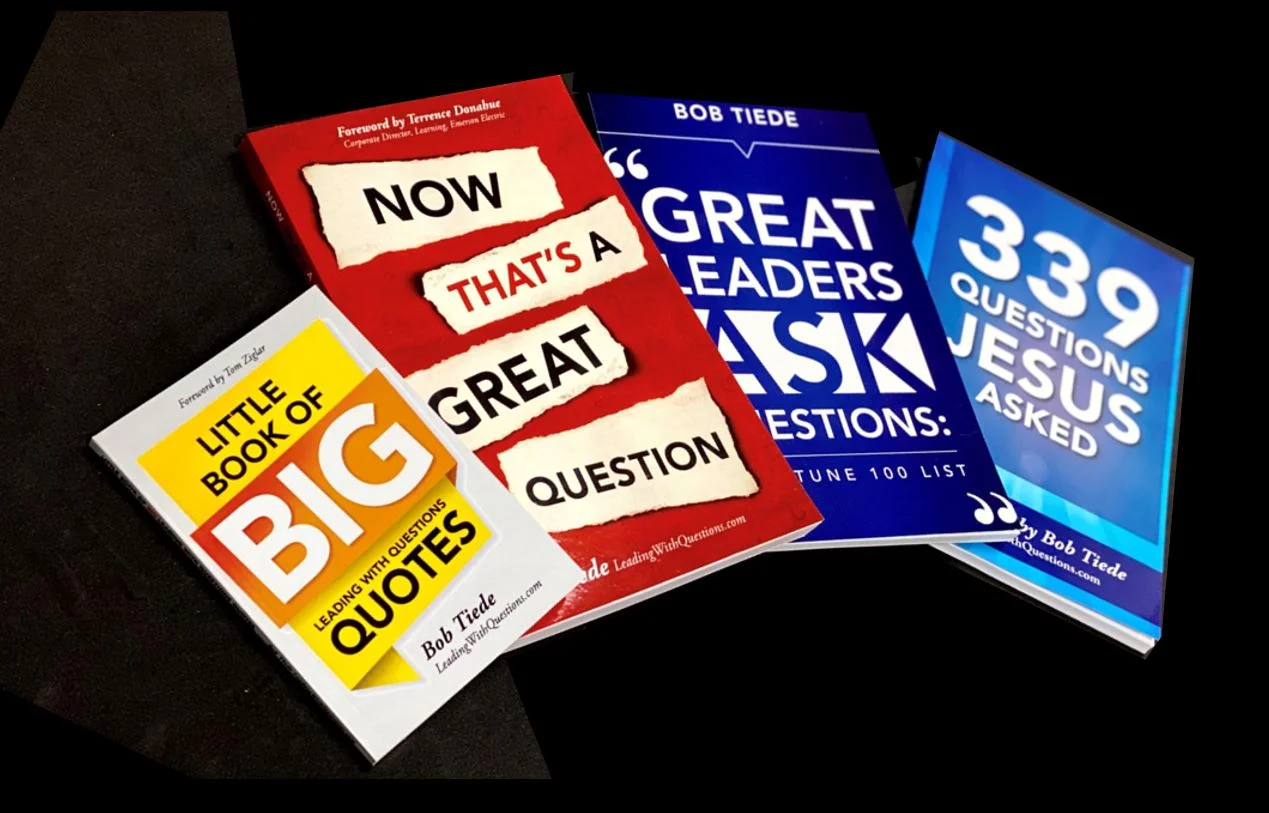Five Star Insights with Arti Halai: Bob Tiede

Current role: U.S. Leadership Development Team for Cru
Five-star insights enables us to learn more about successful people from a range of backgrounds and sectors. All of whom are making a difference in society through their choice of location, literature, music, art, and cuisine.
My guest on Five Star Insights is Bob Tiede, a leadership expert who has been with the CRU organization for 50 years. He served for eight years on crew campus, 24 years directing the Josh McDowell Ministry and 18 years on the leadership development team. He’s author of several popular books, including ‘Leading with Questions’ and his blog with the same name is followed by leaders in over 119 countries.
All his books are available for free downloads in multiple languages.
Bob’s career highlights include leading 18 major Mission Trips to Russia with 300-400 volunteers on each trip for the Josh McDowell Ministry.
Table of Contents
The biggest lessons he has learnt include a leader who leads with questions will often be three to 10 times more effective than a leader who leads by telling.


Literature
As an avid reader and author of lots of books, literature seems like a good place to start. I ask Bob to tell us more about his most popular book, Leading with Questions
“I love books. I eat books for breakfast. And in 2006, I discovered a book called ‘Leading with Questions’ by Dr Michael Marquardt, Professor at George Washington University in the Washington DC area; it was a page turner. I didn’t know reading it would actually change my leadership forever and actually set me on a new course. As I read the book I saw over and over that a leader who asks questions is so much more effective than a leader who simply tells staff what to do.”
According to Bob, a leader can be up to ten times more effective when asking questions.
“Why as a leader, would you not want to lean forward? Look at your staff and say,’staff, what do you think we might do to take advantage of this opportunity?’ That simple question, followed by – ‘what else? And what else?’ It is such an easy thing to do and yet so few leaders actually put it into practice.” Ofcourse, Bob says you can rephrase the ‘what else’ but in essence those are the four key powerful questions. The first one followed by three ‘what else?’ ones.
I share with Bob that I can see how this approach empowers others and makes them feel like their views or thoughts are important.
Bob continues “What I find all of us do when we’re asked what we think is we instinctively roll out a safe answer to see how it will be treated. And what I’ve discovered is that it’s often the third and fourth question that gets to what I call their golden nugget. Their very best thought…”
He goes on to explain the eight second rule “Research shows the average person when they ask a question will only wait two or three seconds for an answer. And if the person we’ve asked the question of doesn’t answer in two or three seconds, we either, re-ask the question, ask a different question, answer the question ourselves, or just move on in the conversation with no awareness of what we’ve just done. So becoming a better listener in eight seconds is when you ask a question, then give them the gift of silence.”
Before we move on to the next section, I want to find out more about Bob’s popular blog, ‘Leading with Questions’ It is nine years old but where do the ideas come from?
“I started off writing blogs but then ran out of ideas…today, I’m much more of what I’d call a curator of content rather than an originator. Yes, occasionally I write a post, a new thought comes to me, but 80% are guest’s posts by others. The result is my subscribers get much better content as they’re hearing and learning from some of the greatest leaders around the globe.”
I love that generosity of spirit. We move to my next section which is location.

Location
Bob grew up in a farm in Parkston in South Dakota, USA.
“I had a wonderful experience growing up. My father and one uncle served in world war II. My father actually made the Normandy invasion. He spent time in the UK preparing for that invasion…My dad’s family were four boys and one girl and three of the boys established family farms within five miles of each other. Our little hometown is Parkston, South Dakota population, 1500. And they all started having children. My sister and I are the only two in our family, but we have ten first cousins all similar in age already. We all went to the same school. We all went to the same church, and we thought it was normal.”
Bob remembers how his dad and uncles always called the boys, “men.” He shares the story about being asked by his uncle, which field to harvest first and how his uncle congratulated him on making an excellent choice. “He made me feel so important at the age of nine…what a gift to ask me that question and then go along with my suggestion.”
Bob grew up in a real community environment with lots of cousins around and so different to what many of us experience today.
We continue with the family theme as I move on to my third section and cuisine.

Cuisine
When it comes to food, Bob says “food is a love language and I’m very adventurous when it comes to eating…I like Indian, Mexican, Chinese, Lebanese. When you eat someone’s food, it brings you closer to them. I don’t always know what the dishes are called but I just enjoy it.”
Given his background and upbringing, I ask Bob whether there is a particular dish that is a favourite?
“My favorite meal is Fleish Kekula – which is meat pie – seasoned hamburger with onions placed within doe and deep fat fried. Our family eats this special meal every year at the end of May to celebrate the coming to America by my Great Great Grandpa and Grandma Tiede and their family of 8 children in 1879. They were German Russians.”
I tell Bob that I think it is remarkable that this dish has been passed down through the generations of his family and it brings them all together. Even the grandchildren help with making the dish and Bob says “…ofcourse because they’ve made them, it motivates them to want to eat what they’ve helped make.”
Truly a beautiful tradition that will continue for generations to come in the Tiede household.

Music
As we move on to music, I sense that this also plays a big part in Bob’s life. Again he enjoys lots of different types of music but when I ask him for a favourite genre he says “…there’s a form of music called Southern gospel. It always makes me feel closer to God. I like The Cathedrals and went to their concerts and they got a standing ovation after every song and not just at the end of the concert. They were four men singing in harmony and a piano player…I must confess my children kind of roll their eyes and say, ‘I can’t believe you like that.’”
When I ask Bob about a favourite song, he says “Oh What a Savior by Ernie Haase, Signature Sound.” I want to know what he thought and how he felt the first time he heard that song.
“In the lyrics he talks one day about how he will cross that river and he’s really talking about leaving this life and going to heaven…he is a tenor voice and is just incredible. He has a high range and at any rate it’s a song that always moves my heart.”
Having listened to the song myself, I share with Bob that the song really moved me too. Bob says “An observation of music in general is that when we read words, those thoughts go to our head, our brain, and then sometimes they go from our brain to our heart, but music has a way of communicating so the words go straight to our heart. Its why music is used in so many different situations to create the right environment, to create the right setting.”
I have to agree with the power of music and its ability to do exactly that.
Art
We move on to our final section, Art and Bob has chosen somebody extraordinary whose work I haven’t come across and who I know nothing about. “My favorite art is Glass Art by Dale Chihuly”
I confess that once I had googled his work, I couldn’t stop looking at it. I ask Bob to describe Dale Chihuly’s work “…he blows glass…the most colorful glass shapes of all kinds.” Bob’s favourite work of art by this artist sits in a museum in Florida. “My favorite thing is he has a rowboat and it’s set on a mirrored glass floor. So the floor is a mirror and it’s filled with globes of all sorts of different colors and different sizes. The first time I saw a picture of this, I thought what I was seeing was a little miniature boat with marble. And then we go to the exhibition and I realized this is life size.”
I’m really fascinated that Dale Chihuly’s works with the medium of glass because it’s very fragile, incredibly beautiful and very transparent. His creations include flowers and gardens and as Bob says “you should really google him. His work is mesmerizing…and of course, he’s now training a whole new generation of glass artists.”
Bob says “my wife has been captured by all of this. And she has a collection of glass pumpkins that have been done by many different artists. And in the fall, our home is filled with glass pumpkins. And again, a few of them are orange, like a pumpkin, but they’re all the colors of the rainbow. Some are done in such a way that you tend to see through them, even though there’s a color, others you don’t see through. I should send you some pictures of the pumpkin’s on display at our house.”
I can’t wait to see the pumpkin display and on that note I bring my interview with Bob Tiede and Five Star Insights to a close. I’ve learnt so much about Bob and musicians and artists I would not have known about. Thanks so much, Bob.
Don’t forget to tune into the Five Star Insights podcast.




